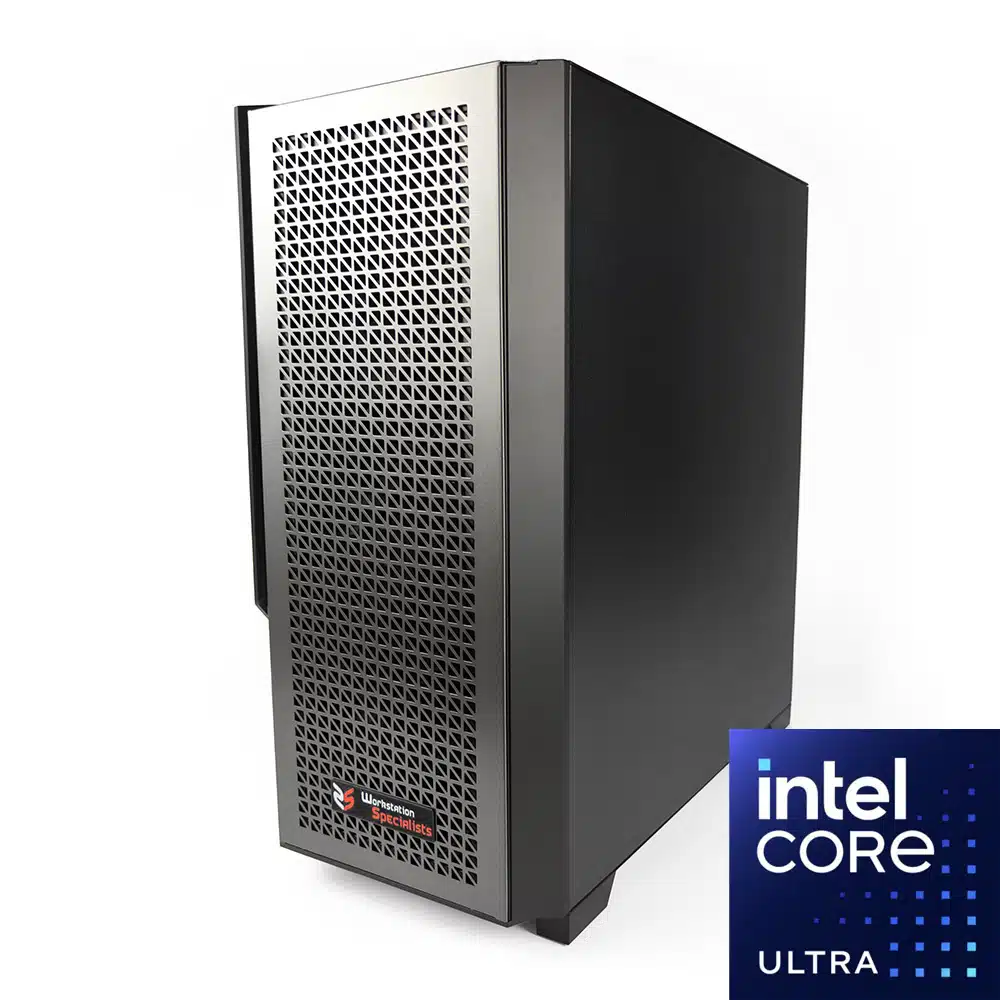When it comes to achieving professional-level results in Adobe Photoshop, your hardware setup matters just as much as your creativity. As we move into 2025, Photoshop’s capabilities are more powerful than ever, with advanced features like AI-powered tools, 3D editing, and complex layer management requiring robust computing power. To keep up with these demands, configuring a workstation for Adobe Photoshop is essential for professionals in graphic design, photography, and digital art.
In this guide, we’ll walk you through the key components to focus on when building or upgrading your workstation for Adobe Photoshop, ensuring optimal performance and efficiency. Whether you’re looking for the best configuration or need tips on maximising your current setup, this guide has you covered.
Why Choose a Dedicated Workstation for Adobe Photoshop?
A workstation for Adobe Photoshop ensures seamless performance when handling high-resolution images, intricate designs, and resource-intensive tasks like batch processing or working with multiple layers. While standard PCs might suffice for casual users, professionals require the enhanced power, stability, and reliability of a purpose-built machine.
Some key benefits of a dedicated workstation for Adobe Photoshop include:
- Faster processing of large files and complex projects.
- Improved multitasking capabilities.
- Reduced lag and rendering times.
- Extended hardware longevity due to optimised configurations.
Why Trust Workstation Specialists to Build Your System?
At Workstation Specialists, we have decades of experience building custom workstations tailored to creative professionals. Our systems are rigorously tested to surpass Adobe’s hardware recommendations, ensuring peak performance for even the most demanding tasks. With a reputation for excellence and a commitment to innovation, we provide reliable, high-performance solutions that empower you to bring your creative visions to life.
Key Components for the Best Workstation for Adobe Photoshop in 2025
1. Processor (CPU): The Heart of Your Workstation
Photoshop relies heavily on CPU performance, particularly for tasks like applying filters, transforming images, and running scripts. When choosing a processor:
- Core Count and Clock Speed: Opt for a CPU with high clock speeds (4 GHz or higher) and at least 6 cores. The Intel Core Ultra series and AMD Ryzen 9 processors are excellent choices.
- Performance Leaders in 2025: Intel Core Ultra 285K and AMD Ryzen 9 9950X offer exceptional single-threaded and multi-threaded performance.
- Architecture vs. Core Count: Balance high clock speeds with efficient architecture; more than 8 cores often gives diminishing returns for Photoshop.
- Best Current Options: AMD Ryzen 9 processors lead in benchmarks, though Intel Core Ultra 285K remains a strong performer.
2. Graphics Card (GPU): Enhancing Visuals
While Photoshop is primarily CPU-driven, GPU acceleration enhances performance for tasks like:
- Zooming and panning high-resolution images.
- Applying GPU-accelerated filters (e.g., blur effects).
- Working with 3D models and compositing.
Recommended GPUs:
Note: Generative AI features such as Adobe Firefly rely on cloud processing, so GPU performance mainly affects local tasks.
3. Memory (RAM): Multitasking Without Limits
- Recommended Minimum: 32GB for professional workflows.
- Optimal Setup: 64GB+ for ultra-high-resolution images or extensive multitasking.
- DDR5 Advantage: Higher speeds and better power efficiency in 2025 make DDR5 a must-have.
Tip: Consider RAM requirements for other software used alongside Photoshop.
4. Storage: Speed and Capacity
- Primary Drive: NVMe SSD (1TB+) for OS and Photoshop installation.
- Secondary Drive: NVMe or SATA SSD (2TB+) for active projects.
- Scratch Drive: 500GB SSD recommended for large project scratch disk.
- Archival Storage: High-capacity HDDs (4TB+) for long-term storage.
5. Display: Precision and Clarity
- Resolution: 4K UHD monitor (27-32 inches).
- Colour Accuracy: 99% AdobeRGB or DCI-P3 coverage.
Recommended: Eizo ColorEdge and Dell UltraSharp PremierColor monitors.
6. Cooling and Power Supply
- Cooling: Quality air or liquid cooling to prevent overheating.
- Power Supply: 750W-1000W PSU, 80 PLUS Gold or Platinum rated.
7. Peripherals
- Graphics tablet (e.g., Wacom Intuos Pro).
- Ergonomic keyboard and responsive mouse.
- External storage: Thunderbolt 4 or USB 4.0 SSDs for backups and portability.
Benchmark Insights
Frequently Asked Questions
Q: Do I need a workstation-grade GPU for Photoshop?
A: Consumer GPUs like NVIDIA GeForce RTX or AMD Radeon RX 7000 series are sufficient for most users. Workstation-grade GPUs are recommended for heavy multitasking or 3D workflows.
Q: Is 16GB of RAM enough for Photoshop in 2025?
A: 16GB handles basic tasks, but professionals should aim for at least 32GB for smooth performance.
Q: Can I use an all-in-one PC for Photoshop?
A: Suitable for casual users, but limited upgradability makes them less ideal for dedicated professional setups.
Conclusion
Investing in the best workstation for Adobe Photoshop is crucial for unlocking your creative potential and staying productive in 2025. By focusing on a balanced configuration of CPU, GPU, RAM, storage, and peripherals, you can create a powerful system tailored to Photoshop’s demands.
Ready to upgrade your setup? At Workstation Specialists, we specialise in designing and building custom systems for creative professionals. Contact us today to discuss your ideal configuration and take your creative projects to the next level!
Call us at +44 (0) 1332 280 380 or email us at [email protected] for expert advice and support.





